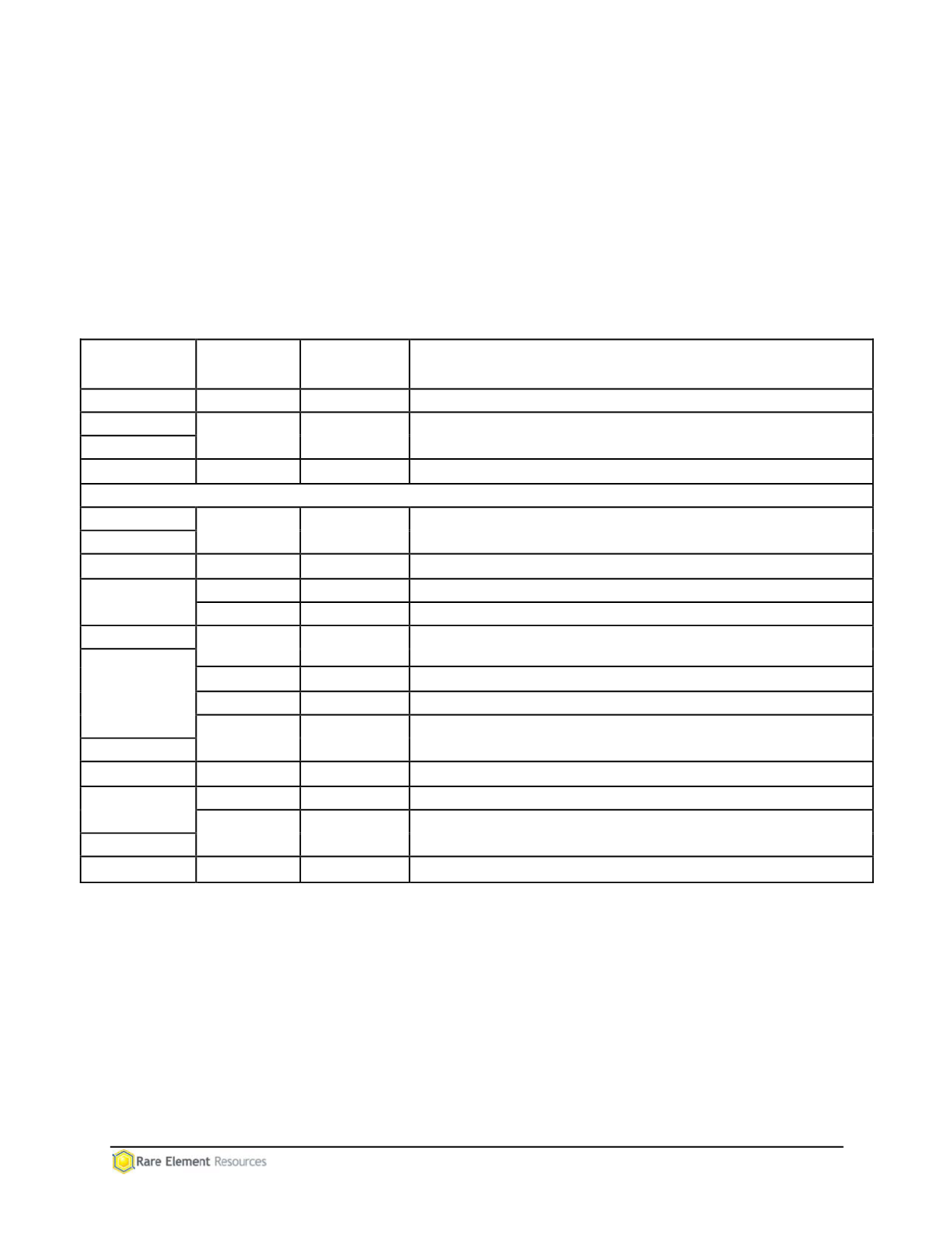
65
or heterolithic breccias. These intrusive bodies commonly exhibit a northwest alignment in the
core of the complex and dome. Carbonatite and silicocarbonatite dikes intruded during later
stages of the evolution of the complex and cut across the main host rocks that include trachyte,
phonolite, and breccias. Phonolite dikes intruded the complex during the waning phases of
igneous activity.
Tertiary sediments unconformably overlie all older rocks and consist of loosely consolidated
siltstone, sandstone, and conglomerate of local derivation. Quaternary deposits include
alluvium, soil cover, and colluvial deposits. Table 5.10-1 below summarizes the formations and
rock units in the Project Area.
Table 5.10-1
Summary of Bear Lodge Project Formations and Lithologies
Geol. Time
Formation
Thickness
(meters)
Lithology
Quaternary
alluvium, land-slide debris
Pliocene
Ogallala
0-17
unconsolidated gravels, trachyte- phonolite pebble-boulder
conglomerate
Miocene
Oligocene
White River
0-42
poorly bedded, friable, tan siltstone
Unconformity
Eocene
Alkalic
intrusives
trachyte, phonolite, heterolithic diatreme breccia, latite, syenite, malignite,
pseudoleucite, carbonatite, silicocarbonatite
Paleocene
Cretaceous
Lakota
4-Mar
light grey to white medium grained sandstone
Jurassic
Morrison
< 6
greenish-grey claystone
Sundance
~114
sandstone & shale members
Triassic
Spearfish
155-273
reddish brown, friable shale, siltstone &fine grained sandstone, white
gypsum
Permian
Minnekahta
13-18
thin grey limestone marker
Opeche
20-26
Fine grained reddish brown siltstone & Shale
Minnelusa
175-198
tan-light brown friable calcareous sandstone
Pennsylvania
Mississippian
Pahasapa
155-175
grey, massive fine grained limestone
Ordovician
Whitewood
~45
light grey fine grained limestone
Deadwood
> 270
hard white, red quartzite, thin bedded shaly limestone commonly inflated or
replaced by Tertiary intrusive bodies
Cambrian
Precambrian
Granite roof pendants
(Modified after Meyer, 2001)
5.10.3 Property Geology
The Bear Lodge REE deposits are located near the axis of the elongate dome and are
associated with carbonatite and silicocarbonatite dikes, veins, and stockworks hosted by the
Bull Hill and Whitetail diatremes, and surrounding trachytes and phonolites. The northwest
alignment of diatremes extends from Bull Hill through Whitetail Ridge, to Carbon Hill, and
coincides with numerous north- to northwest-striking alkalic dikes and mineralized zones (see
Figure 5.10-3). Carbonatite and silicocarbonatite dikes intrude diatremal heterolithic breccias
and surrounding trachytes, phonolites, and igneous intrusion breccias. They commonly strike
north-westerly to northerly. Within the Bear Lodge deposit, the carbonatite and silicocarbonatite
dikes are generally concentrated within the margins of the diatreme and in adjacent wall rocks


